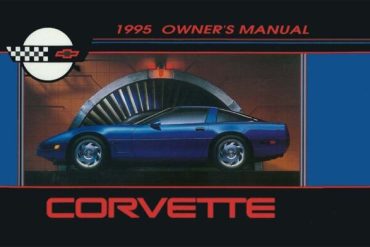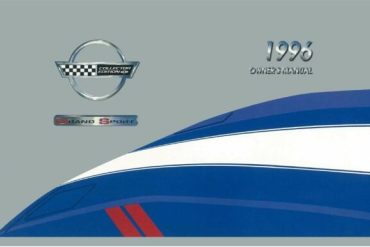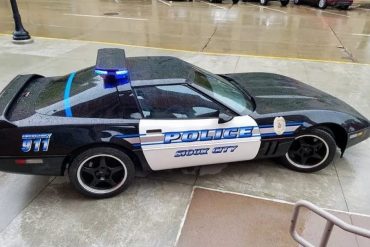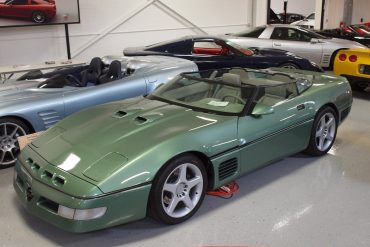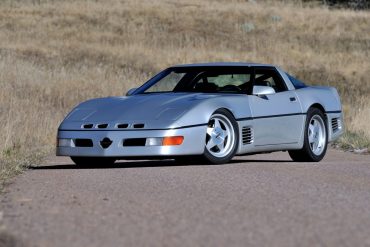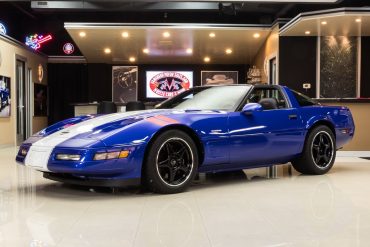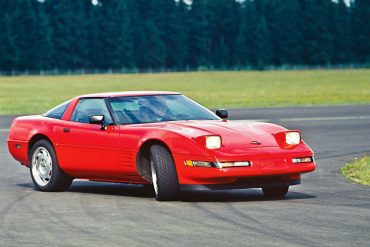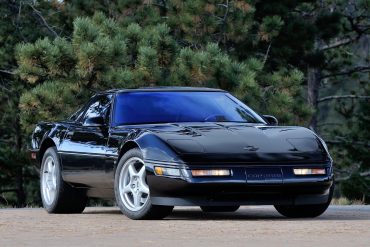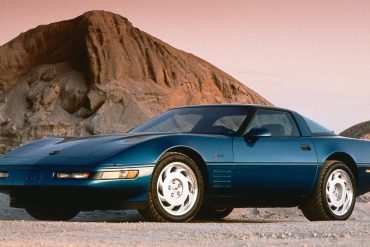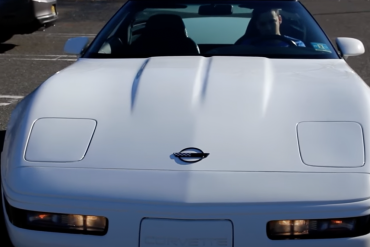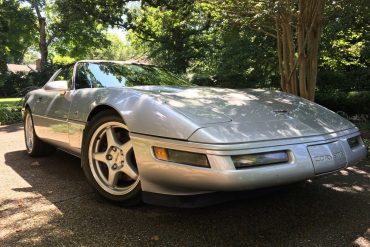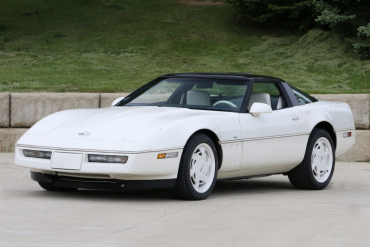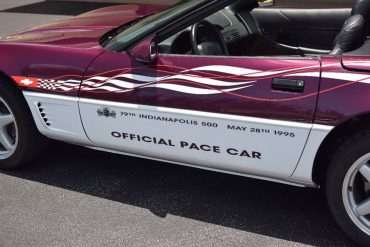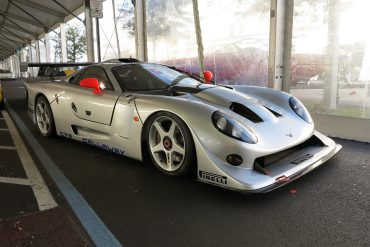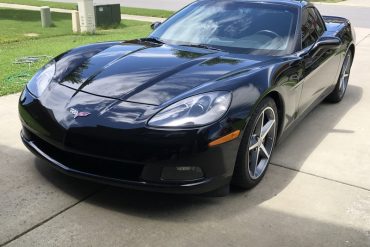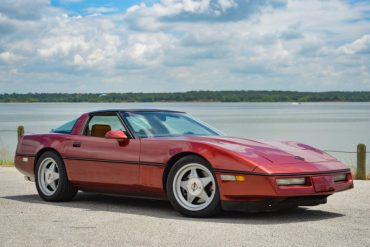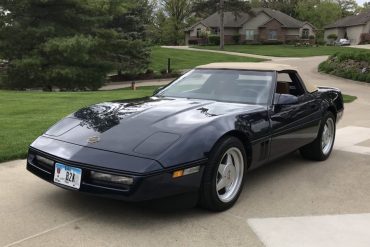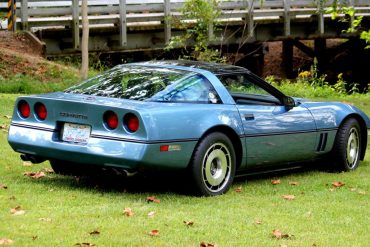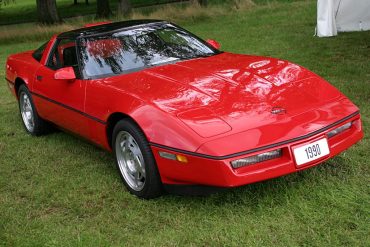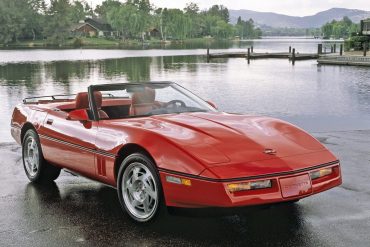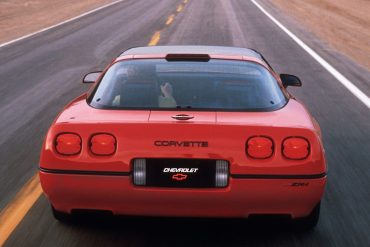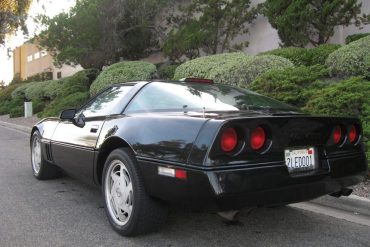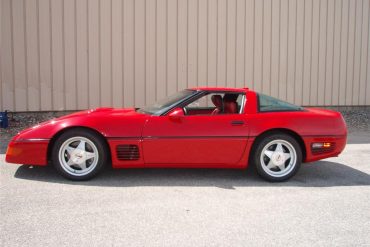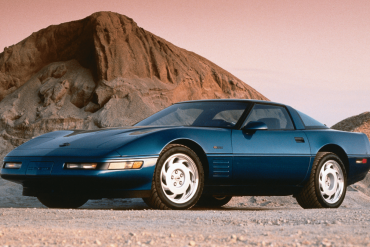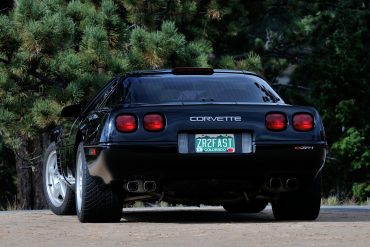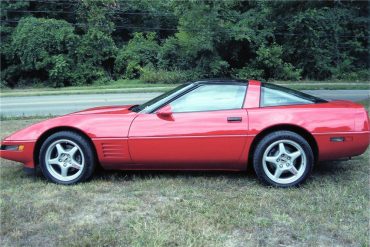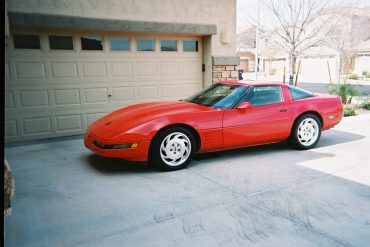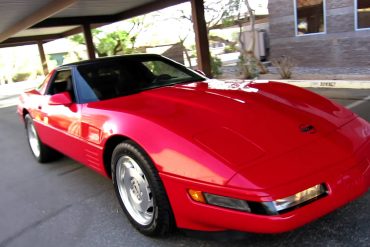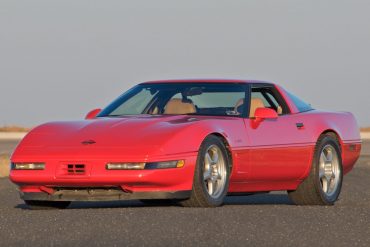This Owners Guide contains important information regarding the operation and maintenance of your 1995 Corvette. In order to obtain maximum enjoyment and usage from your car, we suggest that you familiarize yourself with the contents...
This Owners Guide contains important information regarding the operation and maintenance of your 1996 Corvette. In order to obtain maximum enjoyment and usage from your car, we suggest that you familiarize yourself with the contents...
Officers lead “Putting Love & Sweat into the Vette” Restoration Program While so many of the stories we publish at...
In 1989 Callaway introduced a Speedster which was the culmination of their styling, engineering and trimming talents. Their first example was a bright green ZR1, which had a severely chopped windscreen, no side mirrors, eighteen inch wheels and a vibrant blue leather interior stitched purposefully from Germany. Nothing about Callaway’s Speedster was reserved, and this is especially true when investigating the specification. The car had 450 horsepower.
This Sledgehammer reached 254.76 mph at the Transportation Research Center (TRC) in Ohio and became the world’s fastest street-legal car for some time. It was built up by Reeves Callaway in Connecticut as an example of what was possible with the new ZR1 and and turbocharging its LT5 engine. The result was a 898 bhp coupe that still retained luxuries such as air conditioning and a radio. It got this power by using a NASCAR-spec block with Mahle pistons and a massive turbo.
This 1996 Grand Sport Is About As Clean As You’ll Find In Today’s Marketplace We haven’t had the opportunity to...
C4 Corvette VIN Decoder Starting in 1981 GM added several characters to the Corvette VIN to bring the total up...
C4 Corvette Build Dates & Production Timeline Below we have captured the build date data for all C4 Corvette cars. We...
The C4 generation Corvette cars should have begun selling in 1983, but they didn’t. Development and quality control issues prevented the introduction of the C4 Corvette until March of 1983.
This 1996 Collector’s Edition Corvette For Sale on Ebay Looks Like a Great Buy Few fourth-generation Corvettes are more desirable...
While not exactly a "collector's edition" Corvette in its own right, it nonetheless has become a uniquely identifiable and collectible Corvette from the fourth-generation era. 1988 marked the 35th anniversary for Corvette, and so it was decided that Chevrolet should commemorate the milestone by introducing an anniversary-edition model. This anniversary car was the first of its kind in a decade, given that Chevrolet opted not to manufacture a Corvette in 1983.
The actual Corvette Pace Car that served at the 79th running of the Indianapolis 500 was a near-stock LT1 Corvette Convertible, except for the mandatory safety features that were required by the Indianapolis Motor Speedway. The Official Pace Car cam equipped with strobe lights, a special roll-bar, five-point safety harnesses for the driver and passenger and an on-board fire suppression system. Chevrolet built just three of the actual pace cars.
The Callaway C7 was a completely new, purpose-built car designed to embody the company’s motto: “Powerfully Engineered Automobiles”, carrying on the visual tradition of design by Paul Deutschman and offered in a limited production series. The C7 was the first complete, bespoke Callaway Automobile. This sportscar was equipped with a carbon chassis, front mid engine/rear transaxle design, 650 horsepower SuperNatural engine.
Disconnect your Corvette’s Battery? Then You Need To Be Aware About GM OBDII Driving Cycles If you own a late-model...
This Callaway Corvette Could Be Yours By the End of the Week! Our friends at Bringatrailer.com frequently post some truly...
FOR SALE: A 1988 Callaway Twin-Turbo Corvette Convertible We are pleased to present this 1988 Corvette Convertible. Our friends at...
1984 C4 Corvette RPO Codes, Options Codes & Order Guide If you are looking to decode your 1984 Corvette RPO’s...
1985 C4 Corvette RPO Codes, Options Codes & Order Guide If you are looking to decode your 1985 Corvette RPO’s...
1986 C4 Corvette RPO Codes, Options Codes & Order Guide If you are looking to decode your 1986 Corvette RPO’s...
1987 C4 Corvette RPO Codes, Options Codes & Order Guide If you are looking to decode your 1987 Corvette RPO’s...
1988 C4 Corvette RPO Codes, Options Codes & Order Guide If you are looking to decode your 1988 Corvette RPO’s...
1989 C4 Corvette RPO Codes, Options Codes & Order Guide If you are looking to decode your 1989 Corvette RPO’s...
1990 C4 Corvette RPO Codes, Options Codes & Order Guide If you are looking to decode your 1990 Corvette RPO’s...
1991 C4 Corvette RPO Codes, Options Codes & Order Guide If you are looking to decode your 1991 Corvette RPO’s...
1992 C4 Corvette RPO Codes, Options Codes & Order Guide If you are looking to decode your 1992 Corvette RPO’s...
1993 C4 Corvette RPO Codes, Options Codes & Order Guide If you are looking to decode your 1993 Corvette RPO’s...
1994 C4 Corvette RPO Codes, Options Codes & Order Guide If you are looking to decode your 1994 Corvette RPO’s...
1995 C4 Corvette RPO Codes, Options Codes & Order Guide If you are looking to decode your 1995 Corvette RPO’s...
1996 C4 Corvette RPO Codes, Options Codes & Order Guide If you are looking to decode your 1996 Corvette RPO’s...


